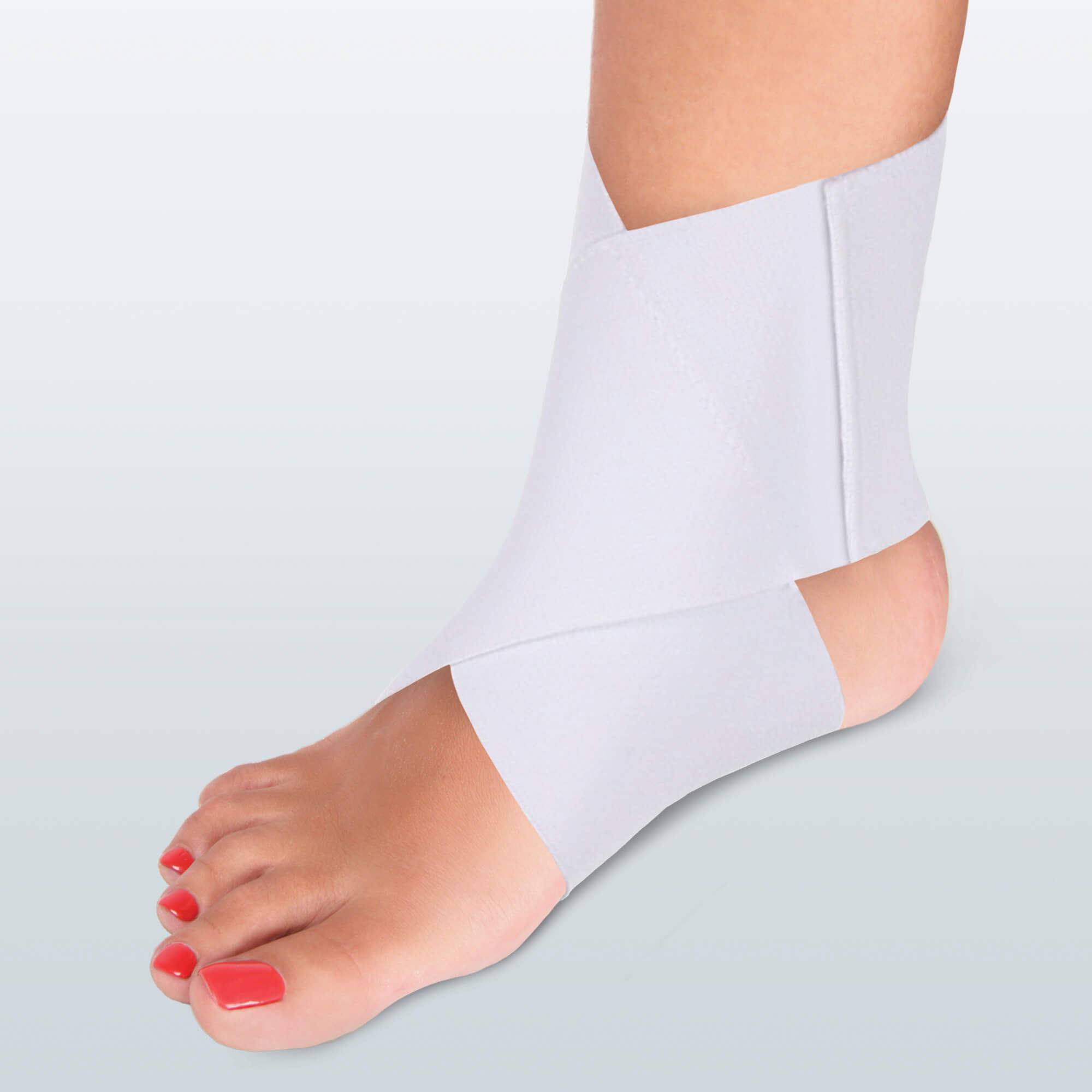Understanding Diabetic Ulcers on the Ankle
Diabetes is a chronic medical condition that affects millions of people worldwide. While many complications are associated with diabetes, one of the most common is the development of foot ulcers, particularly on the ankle. Diabetic foot ulcers can be a serious problem for people with diabetes, as they can lead to infections and, in severe cases, amputation. The development of foot ulcers can be prevented through proper foot care and early detection and treatment. This article will discuss diabetic foot ulcers on the ankle, including their causes, symptoms, treatment options, and prevention strategies. We hope that this article will provide valuable information and guidance to diabetic patients and their caregivers and help to prevent the complications associated with diabetic foot ulcers.
Causes of Diabetic Ulcers on the Ankle
Diabetic foot ulcers on the ankle can have various causes, including neuropathy, vascular disease, and trauma. Here are the different causes of diabetic ulcers on the ankle:
Neuropathy
- Loss of sensation: Peripheral neuropathy can cause a loss of sensation in the feet, making it difficult for diabetic patients to feel pain or discomfort in the affected area. This can lead to ulcers if minor injuries go unnoticed and untreated.
- Autonomic neuropathy: Autonomic neuropathy can affect the nerves that control sweating, oil production, and blood flow to the feet, leading to dry skin, calluses, and poor circulation.
Vascular Disease
- Poor blood flow: Vascular disease can lead to poor blood flow to the lower extremities, increasing the risk of ulcers and delaying their healing.
- Peripheral arterial disease: Peripheral arterial disease (PAD) is a condition that affects the arteries that supply blood to the legs and feet. PAD can cause pain, cramping, and poor circulation in the affected area, increasing the risk of ulcers.

Trauma
- Cuts and blisters: Trauma, such as a cut or blister on the foot, can contribute to foot ulcers. Diabetic patients may be more prone to cuts and blisters due to neuropathy and poor circulation.
Risk Factors
- Calluses: Calluses are thick, hardened areas of skin that can develop on the feet due to excessive pressure or friction. Over time, calluses can lead to the development of ulcers if not properly managed.
- Deformities: Deformities such as hammertoes, bunions, and Charcot foot can increase pressure on the foot, leading to ulcers.
- Poorly fitting footwear: Ill-fitting footwear can cause pressure points and friction on the foot, increasing the risk of ulcers.
- High blood glucose levels: High blood glucose levels can impair wound healing and increase the risk of infection.
Diabetic patients must be aware of the different causes of diabetic foot ulcers on the ankle and take steps to prevent them from developing. Regular foot exams and proper foot care can help to prevent foot ulcers and maintain good foot health.

Symptoms of Diabetic Ulcers on the Ankle
Diabetic foot ulcers on the ankle may start as a callus or blister, and can progress to an open sore that may drain pus or blood. The affected area may be red, swollen, and tender to the touch. Here are some of the symptoms of diabetic ulcers on the ankle:
Callus Formation
Calluses are thick, hardened areas of skin that can develop on the feet due to excessive pressure or friction. Diabetic patients are more prone to calluses due to peripheral neuropathy, which can cause a loss of sensation in the feet. Over time, calluses can lead to the development of ulcers if not properly managed.
Blister Formation
Blisters are fluid-filled sacs that can develop on the feet due to friction or trauma. Diabetic patients are more prone to blisters due to peripheral neuropathy, which can cause a loss of foot sensation. Blisters can quickly progress to ulcers if not properly managed.
Redness and Swelling
Diabetic ulcers on the ankle can cause redness and swelling in the affected area. This is due to inflammation and increased blood flow to the area as the body tries to heal the wound.
Drainage
Diabetic ulcers on the ankle may drain pus or blood, indicating that the ulcer is infected. If a foul odor or fever accompanies the drainage, it is important to seek medical attention immediately.
Pain and Tenderness
Diabetic ulcers on the ankle can be painful and tender to the touch. This is due to inflammation and nerve damage in the affected area.
Delayed Healing
Diabetic ulcers on the ankle can take longer to heal than other types of wounds. This is due to poor circulation and impaired wound healing in diabetic patients.
It is important to seek medical attention at the first sign of a diabetic ulcer on the ankle. With proper care and treatment, many diabetic patients can avoid the complications associated with foot ulcers and maintain good foot health.

Diagnosis and Treatment of Diabetic Ulcers on the Ankle
Diabetic foot ulcers on the ankle can be diagnosed and treated by a podiatrist, who specializes in caring for the feet. Here are the different methods of diagnosis and treatment:
Diagnosis
- Physical Examination: A podiatrist will perform a thorough examination of the affected area, looking for signs of infection, inflammation, and other abnormalities.
- Imaging Tests: X-rays, MRIs, or CT scans may be ordered to evaluate the extent of the ulcer and to check for underlying bone or joint problems.
- Biopsy: A tissue sample may be taken from the ulcer to check for signs of infection or to evaluate the effectiveness of treatment.
Treatment
The treatment for diabetic ulcers on the ankle may involve a combination of different approaches, depending on the severity and extent of the ulcer. Here are the different treatment options available:
- Wound Care: Wound care involves cleaning the affected area and removing dead tissue to promote healing. This may involve using special dressings, topical medications, or debridement (removal of dead tissue).
- Offloading: Offloading involves taking pressure off the affected area by using special footwear, crutches, or a wheelchair. This can help to promote healing and prevent further damage to the ulcer.
- Antibiotics: Antibiotics may be prescribed to prevent or treat infection in diabetic foot ulcers on the ankle. This may involve oral antibiotics or topical antibiotics applied directly to the ulcer.
- Compression Therapy: Compression therapy may improve blood flow to the affected area and promote healing. This may involve using special bandages, stockings, or wraps.
- Surgery: In severe cases, surgery may be required to remove infected tissue or to realign the bone or joint. If the ulcer is not healing or is increasing in size, amputation may be necessary to prevent the spread of infection.
It is important to seek medical attention at the first sign of a diabetic ulcer on the ankle. With proper care and treatment, many diabetic patients can avoid the complications associated with foot ulcers and maintain good foot health. Your podiatrist can guide and advise on the best treatment options for your condition.

Prevention of Diabetic Ulcers on the Ankle
Diabetic foot ulcers on the ankle can be prevented through proper foot care and regular podiatric care. Here are the different strategies for preventing diabetic foot ulcers on the ankle:
Foot Care
- Inspect your feet daily: Check your feet daily for any signs of redness, swelling, calluses, blisters, or open sores. If you notice any abnormalities, seek medical attention immediately.
- Keep your feet clean and dry: Wash them daily with mild soap and warm water, and dry them thoroughly, especially between the toes.
- Moisturize your feet: Apply a moisturizing lotion to your feet daily to prevent dry skin and cracking.
- Wear properly fitting footwear: Choose shoes that fit well and provide ample support and cushioning. Avoid shoes that are too tight or too loose, and always wear socks or stockings with your shoes.
- Avoid walking barefoot: Walking barefoot can increase the risk of cuts, blisters, and other foot injuries.
Blood Glucose Control
- Monitor your blood glucose levels: Regularly check your blood glucose levels and keep them within a healthy range.
- Follow a healthy diet: Eat a balanced diet rich in fruits, vegetables, whole grains, and lean proteins. Avoid foods that are high in sugar, saturated fat, and cholesterol.
- Take your medications as prescribed: If you take medication to control your blood glucose levels, take it as your healthcare provider prescribes.
Regular Podiatric Care
- See your podiatrist regularly: Schedule regular appointments with your podiatrist to check your feet for any signs of problems.
- Treat foot problems promptly: If you notice any signs of foot problems, such as redness, swelling, or an open sore, seek medical attention immediately.
- Wear custom orthotics: If you have deformities or other foot problems, your podiatrist may prescribe custom orthotics to help alleviate pressure and prevent ulcers.
By following these prevention strategies, diabetic patients can reduce their risk of developing foot ulcers on the ankle and maintain good foot health. If you have any questions or concerns about preventing diabetic foot ulcers, consult your podiatrist for guidance and advice.
Conclusion
Diabetic foot ulcers on the ankle can be a serious complication of diabetes, but with proper care and treatment, they can be prevented and managed. By understanding the causes, symptoms, treatment options, and prevention strategies for diabetic foot ulcers, diabetic patients can take steps to protect their feet and maintain good foot health. If you have any questions or concerns about diabetic foot ulcers on the ankle, consult your podiatrist for guidance and advice.

